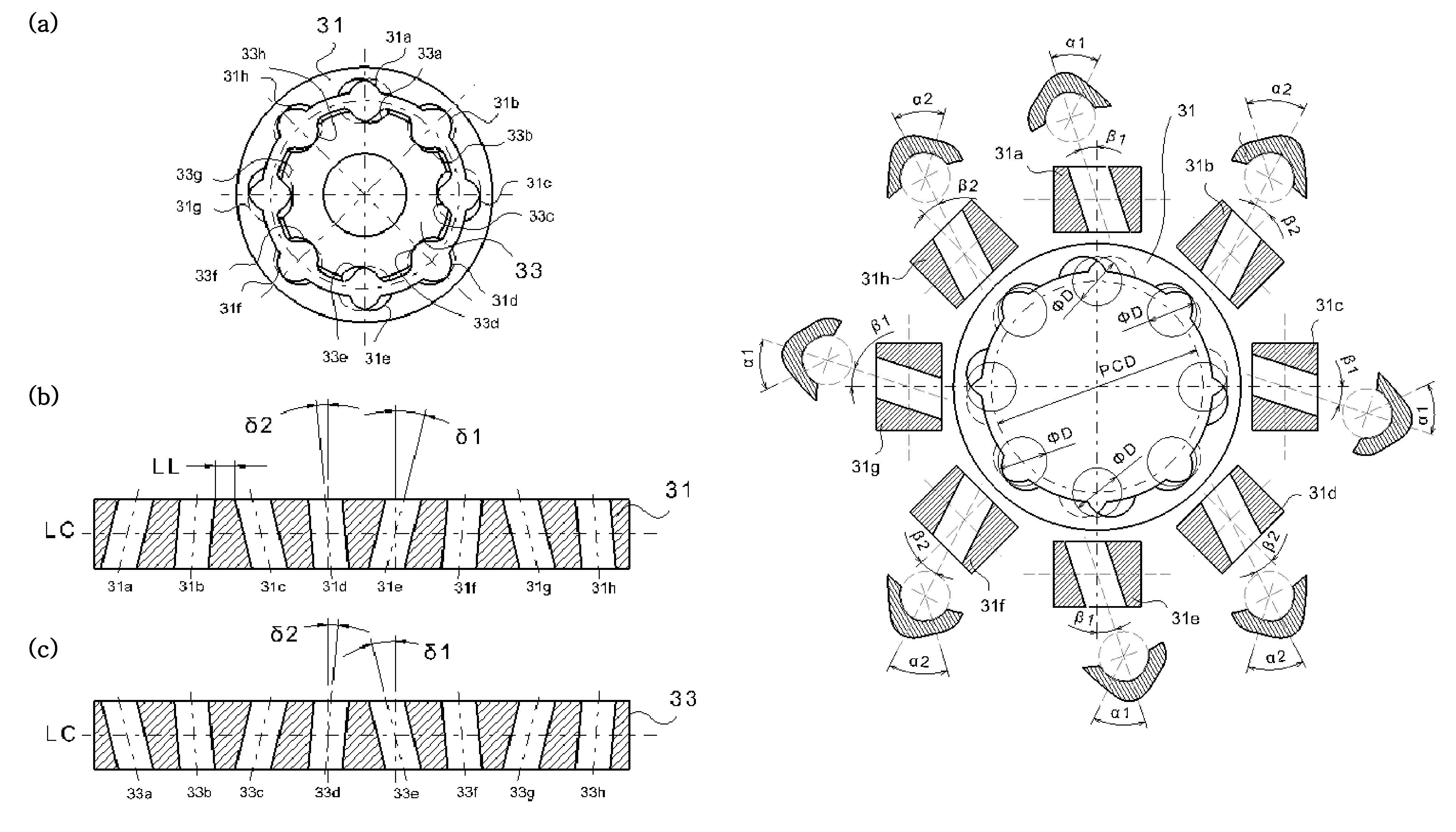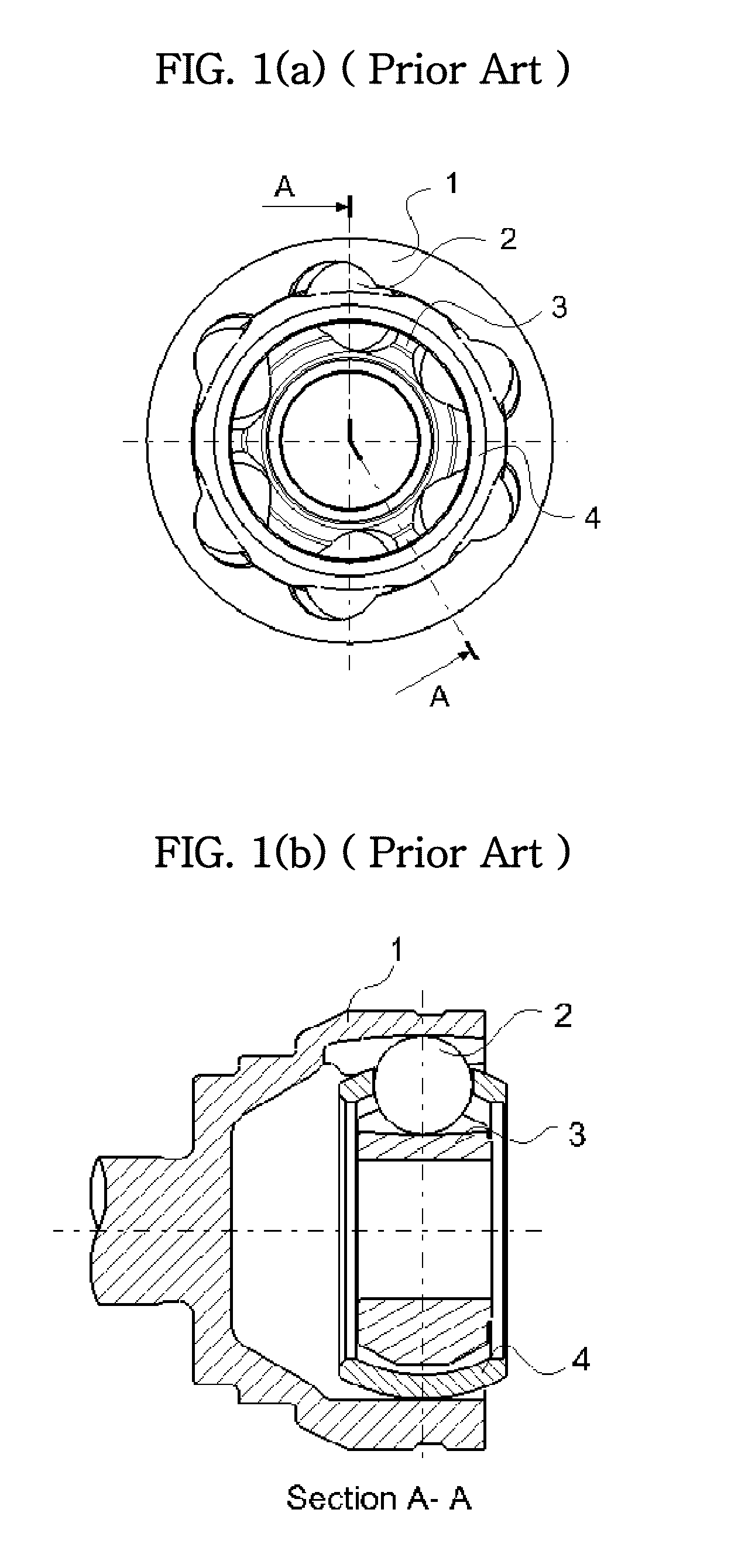Cross Groove Type Constant Velocity Joint
a constant velocity joint and cross-grain technology, applied in the direction of yielding couplings, shafts for rotary movement, couplings, etc., can solve the problems of deteriorating the load bearing capacity of the joint, and achieve the effect of compact and durable structure and enhanced strength of the cage web
- Summary
- Abstract
- Description
- Claims
- Application Information
AI Technical Summary
Benefits of technology
Problems solved by technology
Method used
Image
Examples
Embodiment Construction
[0049]The present invention will be explained and illustrated below in association with several embodiments to be described later, in particular, the cross groove joint of eight ball type. However, it is noted that the present invention is not limited to the eight ball type joint, but is applicable to the cross groove joint of any ball type, for example, having six, eight, ten, or more balls.
[0050]Referring to FIGS. 5-11 of the drawings, the cross groove type constant velocity joints of the present invention are described herein in details in association with several exemplary or preferred embodiments thereof. However, the following descriptions of such embodiments are intended primarily for illustrating the principles and exemplary constructions of the constant velocity joints of the present invention, and the present invention is not specifically limited to these exemplary embodiments. Thus, one skilled in the art can appreciate or recognize that various modifications and substitu...
PUM
 Login to View More
Login to View More Abstract
Description
Claims
Application Information
 Login to View More
Login to View More - R&D
- Intellectual Property
- Life Sciences
- Materials
- Tech Scout
- Unparalleled Data Quality
- Higher Quality Content
- 60% Fewer Hallucinations
Browse by: Latest US Patents, China's latest patents, Technical Efficacy Thesaurus, Application Domain, Technology Topic, Popular Technical Reports.
© 2025 PatSnap. All rights reserved.Legal|Privacy policy|Modern Slavery Act Transparency Statement|Sitemap|About US| Contact US: help@patsnap.com



